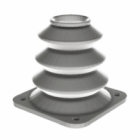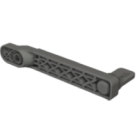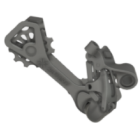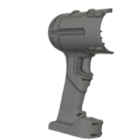Open source vs proprietary software – choosing the right tools for your 3D printing workflow
One of the most important choices when setting up a 3D printing workflow is deciding between open source and proprietary software. Each offers its own advantages, trade-offs, and implications — especially when it comes to flexibility, cost, support, and scalability. Whether you’re working with a commercial 3D printer or building your own open hardware 3D printer, understanding this distinction helps you select tools that match your goals and resources.
Let’s break down what open source and proprietary software really mean in the context of 3D printing, and how they shape your experience from design to print.
Open source vs proprietary software: key differences
The core difference between open source and commercial software lies in accessibility and control. Open source software gives users access to the source code, meaning they can inspect, modify, and redistribute it freely — often under licenses like GPL, MIT, or Apache. In contrast, proprietary software (also known as commercial or closed-source) is owned and controlled by a company. Users are granted limited usage rights, but the code itself remainsinaccessible.
In practice, this distinction affects how much you can customize, how updates are delivered, how bugs are resolved, and whether long-term support is guaranteed.
How open source software fits into 3D printing workflows
In the 3D printing world, open source is deeply embedded in the ecosystem. Many early hobbyist and desktop 3D printers — including the RepRap project — were driven by open designs, open firmware, and 3D open source software. This spirit continues today in slicers like Ultimaker Cura, PrusaSlicer, OctoPrint, and Klipper, all of which are community-developed and widely adopted.
One of the key benefits of open source software for 3D printing is adaptability: users can tweak settings, develop custom plugins, or tailor the toolchain to specific hardware. And yes — to answer a common question — open source software can be used for commercial purposes, as long as you comply with the licensing terms.
Pros and cons of open source 3D printing software
Advantages:
| Challenges:
|
Pros and cons of proprietary 3D printing software
Proprietary software, such as Materialise Magics, or Autodesk Netfabb, is built and maintained by commercial developers. It often provides polished user experiences, advanced automation, and integration with hardware ecosystems.
Advantages:
| Challenges:
|
How to choose between open source and proprietary software
Rather than treating this as a binary choice, many users blend both approaches in a hybrid workflow — for example, designing in a commercial CAD environment and slicing with a community-driven tool like Cura. The right setup depends on your hardware, industry, budget, and level of technical expertise. The key is to choose software that empowers your process and supports your production goals — whether open, closed, or a mix of both.
Explore also
- What software do 3D printers use
- CAD software for 3D printing
- 3D print slicer programs
- 3D printing simulation software
- 3D optimization software
Related categories
 Austria
Austria  Bosnia and Herzegovina
Bosnia and Herzegovina  Bulgaria
Bulgaria  Croatia
Croatia  Czech Republic
Czech Republic  Denmark
Denmark  Estonia
Estonia  Finland
Finland  France
France  Germany
Germany  Greece
Greece  Hungary
Hungary  Ireland
Ireland  Italy
Italy  Latvia
Latvia  Lithuania
Lithuania  Poland
Poland  Portugal
Portugal  Romania
Romania  Slovakia
Slovakia  Slovenia
Slovenia  Spain
Spain  Sweden
Sweden  Switzerland
Switzerland  United Kingdom
United Kingdom  Ukraine
Ukraine  China
China  Hong Kong
Hong Kong  India
India  Israel
Israel  Japan
Japan  Malaysia
Malaysia  Philippines
Philippines  Saudi Arabia
Saudi Arabia  South Korea
South Korea  Taiwan
Taiwan  Thailand
Thailand  Turkey
Turkey  United Arab Emirates
United Arab Emirates  Egypt
Egypt  South Africa
South Africa  Tunisia
Tunisia  Canada
Canada  Mexico
Mexico  United States
United States  Brasil
Brasil  Colombia
Colombia  Australia
Australia  New Zealand
New Zealand 












